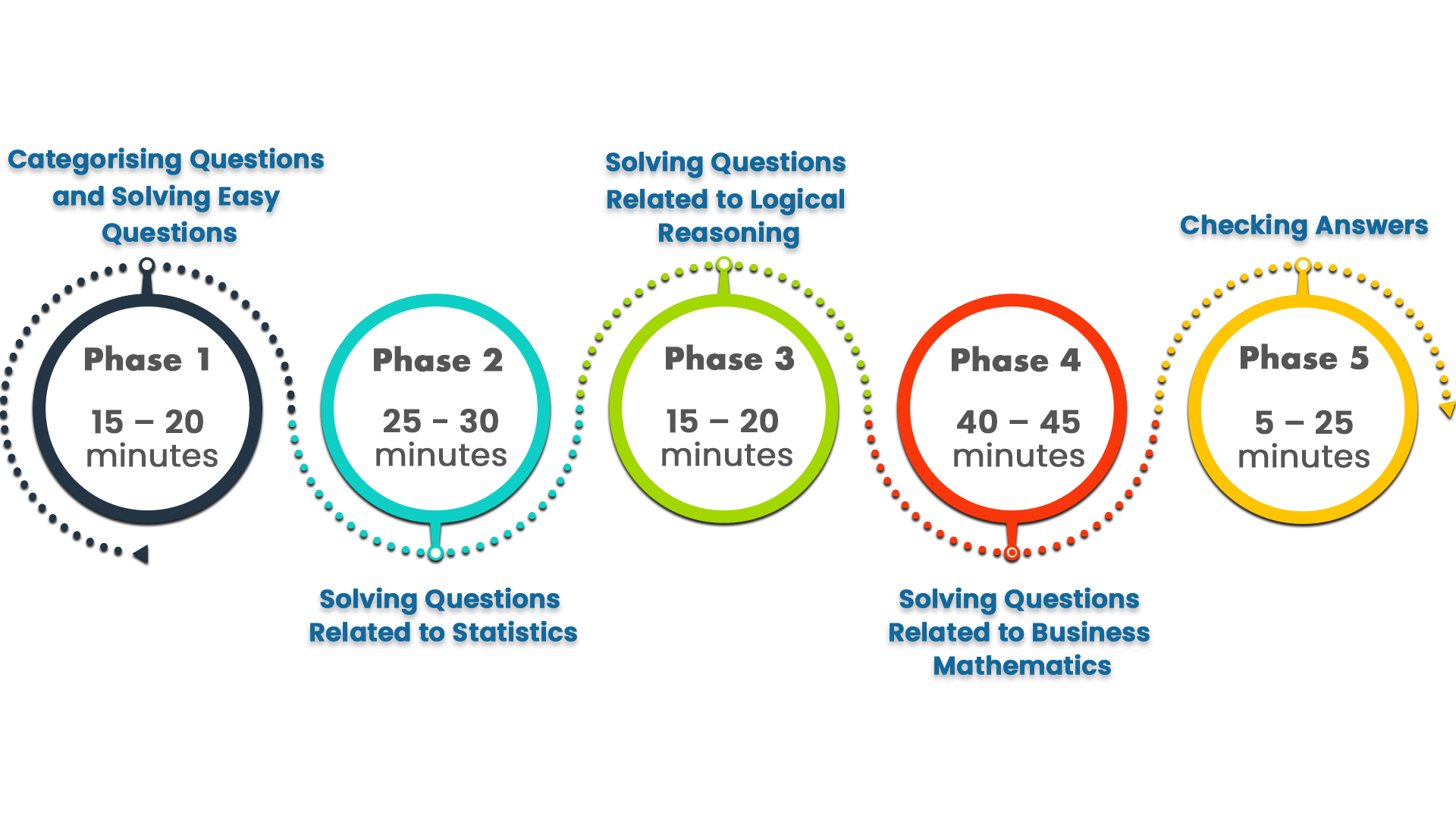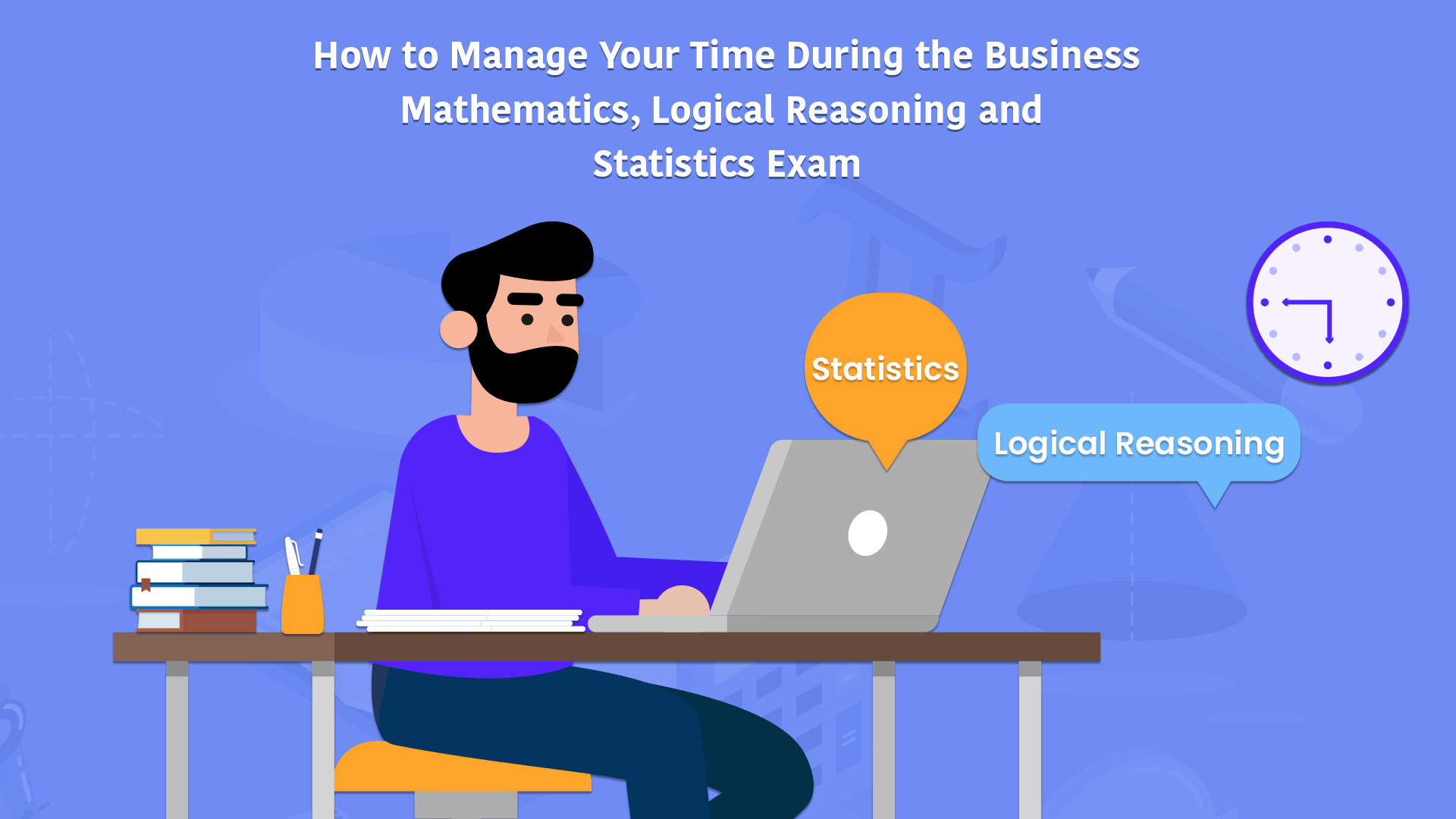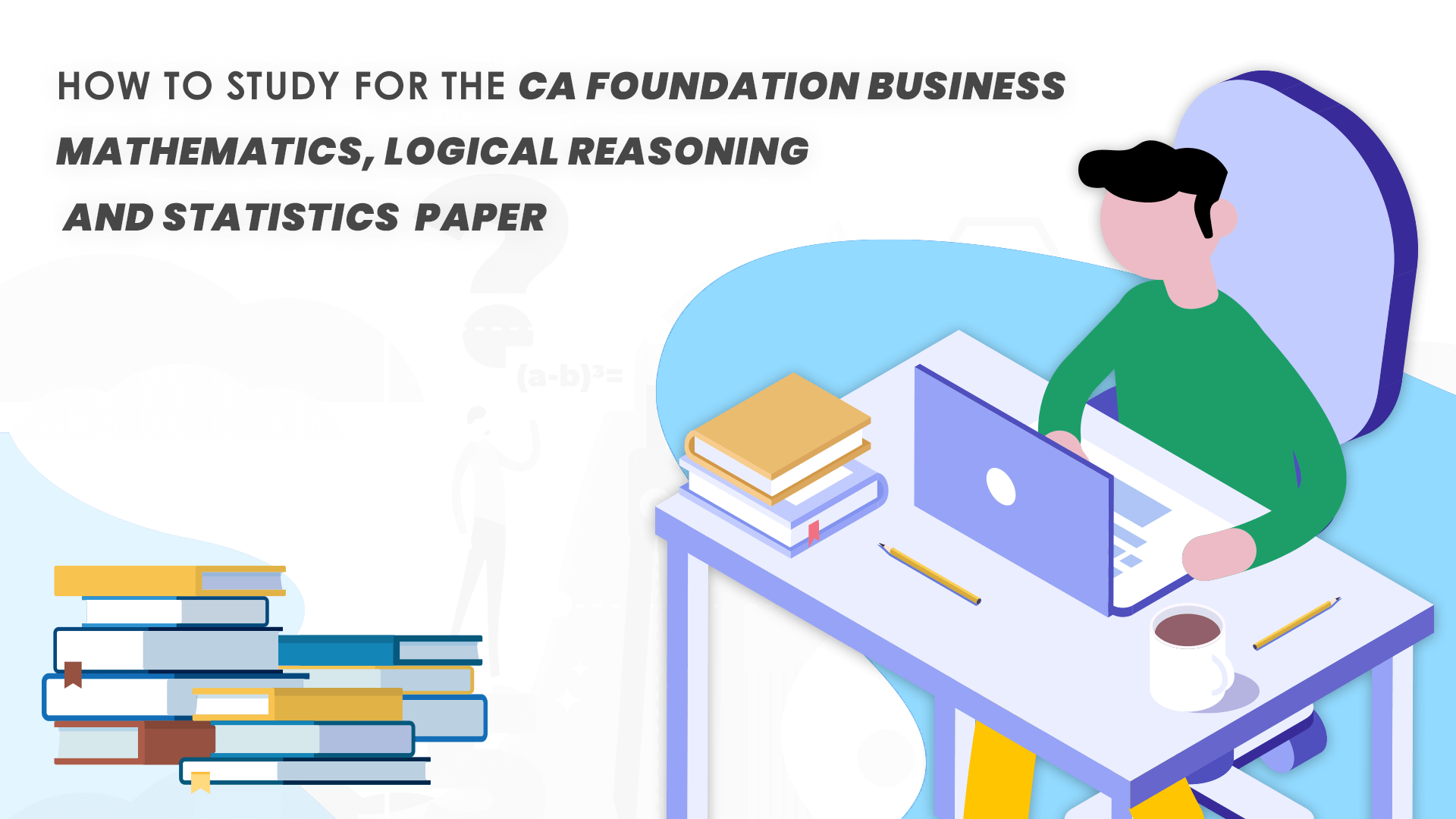How to Manage Time when Solving the Business Mathematics, Logical Reasoning and Statistics Paper
We’ll divide the plan into 5 phases. You should tackle each phase in order:- Phase 1: Categorizing Questions and Solving Easy Questions
- Phase 2: Solving Questions Related to Statistics
- Phase 3: Solving Questions Related to Logical Reasoning
- Phase 4: Solving Questions Related to Business Mathematics
- Phase 5: Checking Your Answers
 This plan is one of the most optimal ways in which to tackle the paper and gain as many marks as possible. To fully understand the plan, we should delve deeply into what each phase involves.
Let’s do that!
This plan is one of the most optimal ways in which to tackle the paper and gain as many marks as possible. To fully understand the plan, we should delve deeply into what each phase involves.
Let’s do that!
Phase 1: Categorizing Questions and Solving Easy Questions
As soon as you get the paper, you need to go over it. Spend about 10 – 15 minutes going over the paper and categories each question according to topic. During this period, mark off questions that look easy for you, and see if you can solve them within 3 -5 seconds upon reading. You’d probably solve about 10 – 15 questions immediately during this exercise! In some cases, perhaps even up to 20(!). Or even 30(!). As an example, let’s look at the mock test paper released by ICAI. In the mock paper, according to the author of the post, the easy questions are: 2 – 4, 7, 12, 22, 23, 29, 35, 39, 43, 61 – 70, 74, 75, 79-81, 84, 86, 87, 90 – 92, 95 – 100. The author was able to solve these questions almost instantly. (This is based on the author’s experience; it may take you a bit longer so don’t worry. This is just for illustrative purposes.) While you are doing this, categories the questions section-wise and topic-wise. For this mock test paper, the questions in the section Business Mathematics fall into these categories:|
Business Mathematics |
|||
|
Topic |
Questions in Category |
Questions already attempted on the first pass (ones categorised as easy) |
Questions to be attempted |
|
Ratio and Proportion, Indices and Logarithms |
1-6 | 2-4 | 1, 5 and 6 |
|
Equations and Matrices |
7 – 12 | 7, 12 | 8 – 11 |
|
Linear Inequalities |
13 | None | 13 |
|
Time Value of Money |
14 – 25 | 22, 23 | 14-21, 24, 25 |
|
Basic Concepts of Permutations and Combinations |
28, 30-32 | None | 28, 30-32 |
|
Sequences and Series – Arithmetic and Geometric Progressions |
26, 33, 34 | None | 26, 33, 34 |
|
Sets, Relations and Functions |
27, 29, 35 | 29, 35 | 27 |
|
Basic Concepts of Differential and Integral Calculus |
36 – 40 | 39 | 36 – 38, 40 |
|
Logical Reasoning |
|||
|
Topic |
Questions in Category |
Questions already attempted on the first pass (ones categorised as easy) |
Questions to be attempted |
|
Number Series, Coding, Decoding and Odd Man Out Series |
41-44 | 43 | 41, 42, 44 |
|
Direction Sense Test |
45, 59, 60 | None | 45, 59, 60 |
|
Seating Arrangements |
46 – 50 | None | 46 – 50 |
|
Blood Relations |
55 – 58 | None | 55 – 58 |
|
Syllogism |
51 – 54 | None | 51 – 54 |
|
Statistics |
|||
| Topic | Questions in Category | Questions already attempted (ones categorised as easy) | Questions to be attempted |
|
Statistical Description of Data |
61-65 | 61 – 65 | None |
|
Measures of Central Tendency and Dispersion |
66 – 78 | 66 – 70, 74, 75 | 71, 72, 73, 76 – 78 |
|
Probability |
79, 80, 82, 83 | 79, 80 | 82, 83 |
|
Theoretical Distributions |
81, 84 – 90 | 81, 84, 86, 87, 90 | 85, 88, 89 |
|
Correlations and Regression |
91 – 94 | 91, 92 | 93, 94 |
|
Index Numbers and Time Series |
95 – 100 | 95 – 100 | None |
Phase 2: Solving Questions Related to Statistics
As mentioned earlier, of the remaining questions, solve the questions related to Statistics first. But in which order? Remember when you categorised the questions topic-wise? This comes into play here. In extremely general terms, according to the author, the easiest topics of statistics ranked in terms of difficulty with the easiest topics first are as follows:- Statistical Description of Data
- Index Numbers and Time Series
- Theoretical Distributions
- Correlations and Regression
- Measures of Central Tendency and Dispersion
- Probability
|
Statistics |
|||
|
Topic |
Questions in Category |
Questions already attempted (ones categorised as easy) |
Questions to be attempted |
|
Statistical Description of Data |
61-65 | 61 – 65 | None |
|
Index Numbers and Time Series |
95 – 100 | 95 – 100 | None |
|
Theoretical Distributions |
81, 84 – 90 | 81, 84, 86, 87, 90 | 85, 88, 89 |
|
Correlations and Regression |
91 – 94 | 91, 92 | 93, 94 |
|
Measures of Central Tendency and Dispersion |
66 – 78 | 66 – 70, 74, 75 | 71, 72, 73, 76 – 78 |
|
Probability |
79, 80, 82, 83 | 79, 80 | 82, 83 |
Phase 3: Solving Questions Related to Logical Reasoning
Now, according to the author, in general (not specific to the mock test paper), the easiest topics of Logical Reasoning ranked in terms of difficulty with the easiest topics first are as follows:- Number series, Coding, Decoding and Odd Man Out Series
- Direction Sense Test
- Seating Arrangements
- Blood Relations
- Syllogism
|
Logical Reasoning |
|||
| Topic | Questions in Category | Questions already attempted on the first pass (ones categorised as easy) | Questions to be attempted |
| Number Series, Coding, Decoding and Odd Man Out Series | 41-44 | 43 | 41, 42, 44 |
| Direction Sense Test | 45, 59, 60 | None | 45, 59, 60 |
| Seating Arrangements | 46 – 50 | None | 46 – 50 |
| Blood Relations | 55 – 58 | None | 55 – 58 |
| Syllogism | 51 – 54 | None | 51 – 54 |
Phase 4: Solving Questions Related to Business Mathematics
From the business mathematics part of the paper, the questions should be solved in this suggested order (this is in general terms and not specific to the mock test paper under discussion):- Ratio and Proportion, Indices and Logarithms
- Equations and Matrices
- Linear Inequalities
- Sets, Relations and Functions
- Sequence and Series – Arithmetic and Geometric Progressions
- Basic Concepts of Differential and Integral Calculus
- Basic Concepts of Permutations and Combinations
- Time Value of Money
|
Business Mathematics |
|||
|
Topic |
Questions in Category |
Questions already attempted on the first pass (ones categorized as easy) |
Questions to be attempted |
| Ratio and Proportion, Indices and Logarithms | 1-6 | 2-4 | 1, 5 and 6 |
| Equations and Matrices | 7 – 12 | 7, 12 | 8 – 11 |
| Linear Inequalities | 13 | None | 13 |
| Sets, Relations and Functions | 27, 29, 35 | 29, 35 | 27 |
| Sequences and Series – Arithmetic and Geometric Progressions | 26, 33, 34 | None | 26, 33, 34 |
| Basic Concepts of Differential and Integral Calculus | 36 – 40 | 39 | 36 – 38, 40< |




